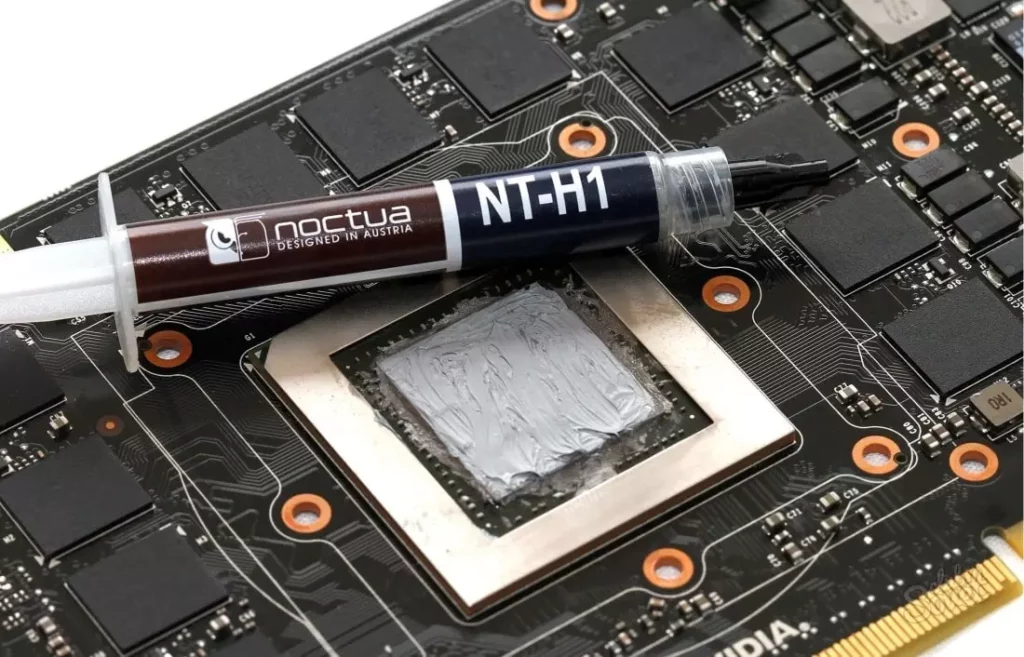
The CPU generates a lot of heat, and it needs a way to get that out of the computer quickly. The main tool for that is the CPU fan, which runs at different speeds based on CPU temperature.
The air passes over the CPU heat plate and a small metal base connected to the plate by thermal paste. The heat then runs up pipes into a larger metal piece that can disperse the heat.
Heatsink
Like a radiator draws heat away from the engine of your car, a heat sink pulls heat away from your computer’s central processing unit. Its base is made of copper or aluminum, a material with high thermal conductivity. It also has a large surface area that can disperse the heat over an extended period of time.
Usually, there is a fan attached to the heat sink that blows air over the fins, cooling them further. This is necessary because the heat can build up to dangerous levels without adequate cooling.
A thermal paste is often used in between the heat sink and the processor to ensure the best possible contact. It helps the heat sink to transfer the hot energy from the CPU into the cooler air. This can be done by using a chemically conductive compound that has a low viscosity and low surface tension. It can also fill gaps, like grooves, between the heat sink and the contact plate on the processor to improve its performance.
Fan
Computer fans are found inside the case and help prevent various computer components from overheating. Without them, components of the computer may become damaged or stop working altogether.
A CPU fan pulls air across a heat sink and blows it away, reducing the temperature of the processor. The base of the CPU cooler usually contains copper, which is chosen for its high thermal conductivity. Thermal paste is used to fill any gaps between the base and the CPU heatplate.
The fan on the CPU also blows air over memory chips, reducing their temperature. Memory chips generate more heat than a CPU, so they require their own cooling.
Other computer components that need their own fans include [[hard disk|hard drives]], which can overheat and cause the loss of data, and [[graphics card|video cards]], which can be damaged by overheating. Other types of fans include those in expansion slots, which can be useful for cooling add-on cards.
Water block
A water block is the key component in a CPU and GPU water cooling system. They transfer heat from the component to the liquid via micro fins and channel design. This allows for higher overclocks than the standard heat sink can. They are also more stable and have a sleek look that can be customized with RGB lighting.
Water blocks are available in a variety of materials, including bare and nickel-plated copper, acetal (POM), and acrylic. They transfer heat from the processor to the water passing through them by using micro-fins and pressure plates that increase surface area in contact with the coolant.
They need periodic flushing and cleaning to prevent sediment build-up that can interfere with water flow and coolant quality. They should also be inspected for leaks, as any fluid leak can damage the CPU and other components. Lastly, the pump should be monitored regularly to ensure that it is working properly and to avoid overheating.
Thermal compound
CPU thermal compound (also known as thermal paste, thermal grease, thermal interface material or TIM) is applied between the contact surfaces of the processor and the heat sink to improve the transfer of heat. It fills microscopic gaps between the two surfaces and eliminates air (a bad thermal conductor) from the interface. It also helps ensure a reliable and long-lasting interface.
Even brand new processors have surface imperfections and microscopic scratches that trap air between the processor and the heat sink. Adding a thin layer of thermal compound between the IHS and the cooler eliminates these problems and improves heat dissipation, which lowers CPU temperature.
Thermal Grizzly Conductonaut liquid metal thermal compound has a runny consistency and is applied to the CPU integrated heat spreader with a syringe delivery system and capillary needle applicator tip. It also ships with a scouring pad and alcohol swab for prep and cleanup. Liquid metal compounds are electrically conductive and require more attention during application than traditional pastes.Cpu cooling